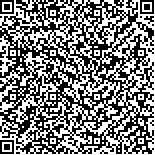李振亚,孙洁,王光明.缺血性脑卒中患者吞咽障碍与病变部位的关系[J].中华物理医学与康复杂志,2023,45(12):1084-1087
扫码阅读全文

|
| 缺血性脑卒中患者吞咽障碍与病变部位的关系 |
|
| |
| DOI:10.3760/cma.j.issn.0254-1424.2023.12.004 |
| 中文关键词: 脑卒中 吞咽障碍 吞咽造影录像检查 误吸 |
| 英文关键词: Stroke Dysphagia Video fluoroscopy Aspiration |
| 基金项目:江苏省科技计划项目(BE2020638) |
|
| 摘要点击次数: 4008 |
| 全文下载次数: 4424 |
| 中文摘要: |
| 目的 探讨缺血性脑卒中患者吞咽障碍与病变部位的关系。 方法 选取2015年1月至2022年3月在徐州市中心医院住院治疗的脑梗死患者178例,依据脑梗死的部位,将其分为幕上脑梗死组(幕上组)111例,和幕下脑梗死组(幕下组)67例,幕上组再根据其脑梗死的侧别,分为左侧大脑半球梗死组59例,右侧大脑半球梗死组34例,双侧大脑半球梗死组18例,共3个亚组。对所有入选患者的吞咽造影录像资料进行回顾性分析。所有患者均接受吞咽造影录像检查,对其唇闭合、食团成形、吞咽失用、舌与硬腭接触、食团后漏、口腔运送时间、咽期吞咽启动、会厌谿残留、喉上抬、梨状隐窝滞留、咽后壁残留、咽期通过时间、误吸、渗漏等14项指标进行分析和比较。 结果 幕上组与幕下组患者在食团成型(χ2=5.116,P=0.024)、吞咽失用(χ2=7.928,P=0.005)、口腔运送时间(χ2=14.152,P<0.01)、咽期吞咽启动(χ2=5.558,P=0.018)、喉上抬(χ2=19.424,P<0.01)、误吸(χ2=4.212,P=0.040)等方面,组间差异均有统计学意义(P<0.05)。左侧大脑半球梗死患者、右侧大脑半球梗死患者和双侧大脑半球梗死患者的误吸发生率(χ2=10.277,P=0.006),组间差异有统计学意义(P<0.05);两两比较,双侧大脑半球梗死患者与左侧大脑半球梗死患者在误吸方面,组间差异有统计学意义(P<0.017)。 结论 幕上脑梗死患者较幕下脑梗死患者更易发生口期吞咽障碍,包括食团成型障碍、吞咽失用及口腔运送时间延长;幕下脑梗死患者较幕上脑梗死患者更易发生咽期吞咽障碍,包括咽期吞咽启动延迟、喉上抬障碍及误吸。双侧大脑半球梗死患者较左侧大脑半球梗死患者更易发生误吸。 |
| 英文摘要: |
| Objective To explore the relationship between dysphagia and the lesion site after an ischemic stroke. Methods The records of 178 cerebral infarction patients were divided into a supratentorial group of 111 and an infratentorial group of 67, according to the site of their lesions. The supratentorial group was further divided into left, right and bilateral groups of 59, 34 and 18, respectively. Fluoroscopic videos of the patients′ swallowing were used to measure lip closure, bolus formation, apraxia, tongue-to-palate contact, premature bolus loss, oral transit time, triggering of pharyngeal swallowing, vallecular residue, larynx elevation, pyriform sinus residue, pharynx wall coating, pharynx transit time, aspiration, and leakage. Results There were significant differences between the supratentorial and infratentorial groups in bolus formation, apraxia, oral transit time, triggering of pharyngeal swallowing, larynx elevation, and aspiration. Moreover, significant differences were found in the incidence of aspiration among the left, right and bilateral supratentorial groups. Conclusions Patients with supratentorial infarction are more likely than those with infratentorial infarction to develop oral dysphagia, including poor bolus formation, apraxia and prolonged oral transit time. Those with infratentorial infarction are more likely to have pharyngeal dysphagia, including poor triggering of pharyngeal swallowing, obstructed larynx elevation, and aspiration. Those with bilateral cerebral hemisphere infarction are more likely to aspirate than those with an infarct in the left cerebral hemisphere. |
|
查看全文
查看/发表评论 下载PDF阅读器 |
| 关闭 |
|
|
|